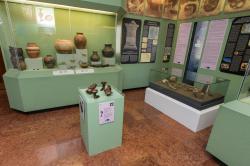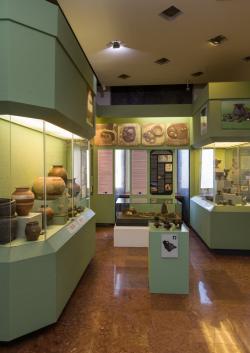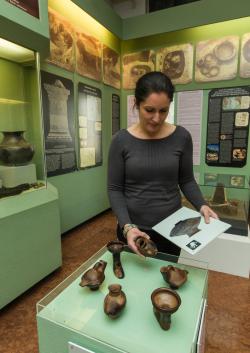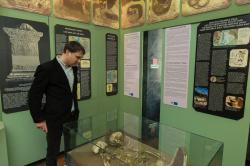How to do it step by step
1st Step:
Choosing the topic and an installation that fits it
We wanted visitors to kind of “bump into” at least one of the five installations on one of the floors of the museum (the museum has four floors in total). Moreover, the permanent exhibition “Ancient peoples, antique cultures” is one of the least interactive ones, since it was built around the early 90s. In addition, it has a very specific design and it is quite densely furnished. It includes nursing vessels, both from ancient times. It shows that this type of tool, which facilitated the feeding of babies in ancient times, has remained useful over thousands of years.
Furthermore, around the same time, a temporary exhibition of a tomb of a mother and her child and accompanying artefacts – in which a mother and child are embracing each other closely – was added. They tried to find a permanent spot to exhibit these artefacts. Thematically, the grave had to be placed next to the nursing vessels, so this is how the location and the subject were combined.
2nd Step:
Collecting materials
At each installation, we worked closely with the curators of the permanent exhibition. In each case, they provided the content (materials) for the installation as well as the descriptions about the Bronze Age artefacts. At the same time, we obtained materials and information on the historical background to the issue of maternal and infant mortality. Additionally, we had to collect information on the current situation on these issues.
3rd Step:
Planning
The installation had to fit in with the permanent exhibition, so we worked with the exhibition’s original graphic designer. We highlighted and emphasized the descriptions on the project’s topic area through the use of colours and we consciously placed the interactive stand in the visitor’s path, so that he/she would approach it automatically and take a look at it. Its size is also distinctive compared to everything else in the room.
4th Step:
Production
In order to have a suitable place for the information panels on the wall, we covered a window in the exhibition room. Carpenters made the stands while the glass cabinet for the grave was donated to us.
5th Step:
Implementation
The grave was transported by a transportation company specializing in artefacts. The museum staff helped with the installation on the walls.























